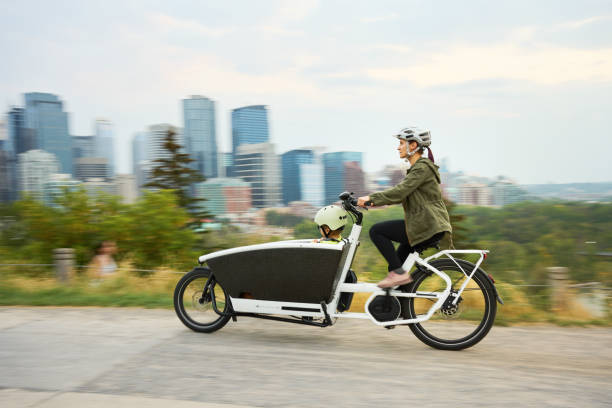Ever wonder why there are so many types of bicycles? Ever stood in awe at a bike shop, bewildered by the variety? I remember my first time.
I was like a kid in an enormous sweet shop, totally amazed. Eyes wide open, mouth agape. Each bicycle seemed to tell its own story – stories of mountain trails conquered, long roads traveled, and city streets navigated with ease.
This is not just about two wheels and pedals anymore. It’s an exploration into cyclocross bikes that laugh in the face of mud; gravel bikes designed for off-road escapades; folding bikes you can take anywhere on-the-go!
In this journey through different types of bicycles we’ll uncover their unique features, functionalities and best use cases…because each one has something special to offer! Intrigued yet?
Table of Contents:
- Understanding Road Bikes
- Mountain Bikes Uncovered
- Hybrid Bikes – The Best of Both Worlds
- Touring Bikes – Built for the Long Haul
- FAQs in Relation to Types of Bicycles
- Unfolding the Intricacies of Folding Bicycles
- Cruising Through the Features of Cruiser Bicycles
- The Dual Dynamics of Tandem Bicycles
- Recumbent Bicycles – Comfort on Wheels
- BMX Bicycles – The Thrill Seeker’s Choice
- Fat Bikes – Conquering All Terrains
- Cargo Bikes – The Utility Powerhouses
- Electric Bicycles – Power-Assisted Pedaling
- Kids Bicycles – Fun and Fitness in One Package
- Racing Bicycles – Speed and Precision Combined
- Conclusion
1 – Road Bikes
Road bikes, often synonymous with regular road or racing bicycles, are built for speed and efficiency. With their lightweight frames and narrow tires, they’re the ideal choice for paved roads where you need to cover distance fast.
![]()
Exploring the Main Features of Road Bikes
The main features that make a road bike unique boil down to its design elements. First off is its frame – typically light yet sturdy enough to withstand high-speed cycling on smooth surfaces. You’ll also notice how these beauties come with skinny tires compared to other bicycle types. But why? The narrower tire cuts through air resistance better and makes it easier for cyclists to maintain higher speeds.
If you’ve ever witnessed a typical road bike in action, you’d be aware of how fast these vehicles can go. They have drop handlebars that allow riders multiple hand positions – perfect when battling headwinds or cruising at high speeds during bicycle racing events.
- Lightweight Frames: Built from materials like aluminum or carbon fiber, which keeps them feather-light without compromising strength.
- Narrow Tires: Less friction against the ground means more speed; thus they’re thinner than those found on mountain or hybrid bikes.
- Aerodynamic Design: Drop handlebars provide an aerodynamic riding position reducing wind resistance allowing cyclists reach greater speeds easily.
For those looking to cover long distances quickly and efficiently, road bikes are the perfect choice. With their design centered around speed and performance on paved roads, they’re popular among racing enthusiasts and long-distance cyclists alike.
However, keep in mind that these aren’t the most comfortable of bicycles for a casual city ride due to their aggressive riding position. But when it comes to races or covering great distances at high speeds – nothing beats a road bike.
The world of cycling is full of fascinating machines designed with specific purposes in mind. Road bikes represent one end of this spectrum – built for pure speed and efficiency on smooth surfaces.
2 – Mountain Bikes
Let’s take a plunge into the realm of mountain bikes, celebrated for their robust construction and off-road capabilities. Mountain biking is more than just an activity; it’s an exhilarating experience that requires the right gear to tackle varying terrains. And at the heart of this adventure lies your companion on two wheels – the mountain bike.
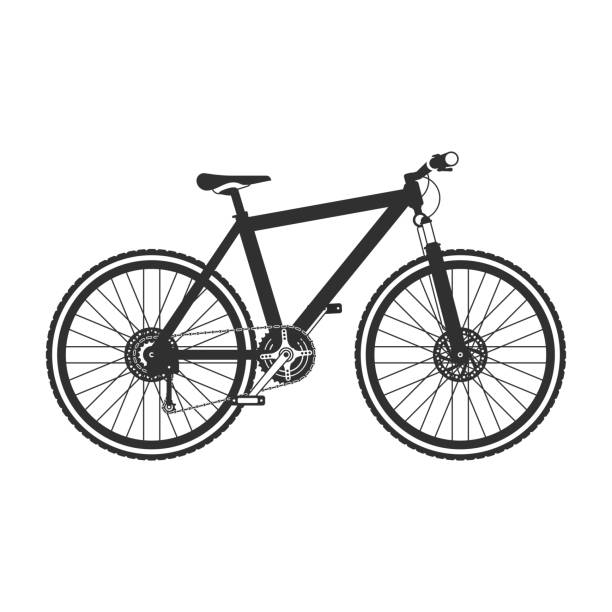
Different Types of Mountain Bikes
The diversity in mountain bike designs caters to different terrains and riding styles, each offering its unique thrill. Let’s explore these types in detail.
Cross-country bikes are built for speed and efficiency, making them ideal companions for fast-paced trail rides or competitive racing events on less rugged paths. Their lightweight frames combined with efficient suspension systems ensure swift handling over relatively smooth terrain.
Moving onto trail bikes – they’re truly versatile beasts designed to handle anything from casual weekend trails around local parks to steep inclines and declines on adventurous tracks. Trail riders appreciate wide tires which offer better traction over slippery or loose surfaces.
If you love challenging yourself against gravity, enduro bikes are what you need. These machines strike a balance between uphill climbing prowess and downhill racing capability — all thanks to their rear suspension system providing maximum shock absorption during those wild descents.
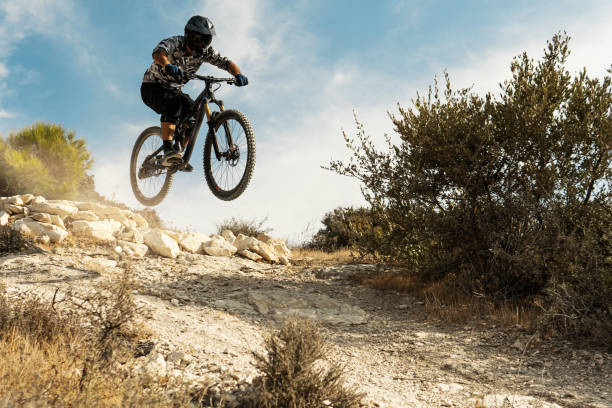
Last but not least come downhill bicycles, also known as gravity-oriented monsters among cyclists due to their superior ability when descending steep mountainsides at breakneck speeds. They sport robust frames coupled with highly responsive full-suspension setups giving control even when things get rough underfoot.
| Mountain Bike Type | Suspension System |
|---|---|
| Cross-Country Bikes | Efficient suspension systems for smooth terrains. |
| Trail Bikes | Versatile with wide tires for better traction on loose surfaces. |
| Enduro (All-Mountain) Bikes | Perfectly balanced for both uphill and downhill challenges. |
3 – Hybrid Bikes
For those seeking the perfect combination of speed and strength, hybrid bikes offer an ideal solution. These two-wheeled wonders blend the best features from both realms, offering an upright riding position for comfort and wider tires for stability.
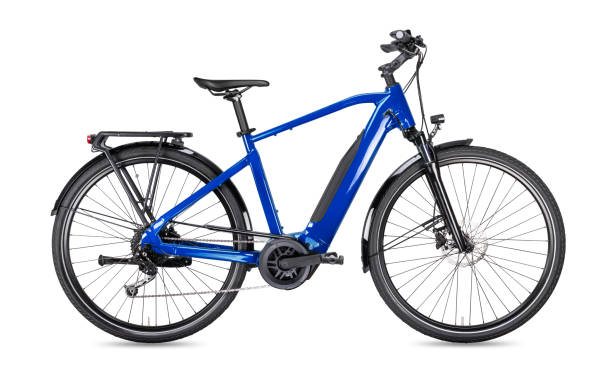
The Versatility of Hybrid Bikes
Why settle for one type when you can have it all? A hybrid bike, as its name suggests, is designed to adapt to various terrains while ensuring your ride remains smooth and enjoyable. Its versatility stems from its unique design that borrows characteristics from both road and mountain bikes.
The standout feature here is undoubtedly the upright riding position that these bicycles offer. It’s perfect if you want to keep an eye on traffic or just enjoy the scenery around town without straining your back or neck – because who said cycling has to be uncomfortable?
But don’t let their relaxed demeanor fool you; these bikes are built tough with wide tires capable of tackling light off-road trails in addition to urban commuting. So whether it’s concrete jungles or natural parks, hybrid bikes are up for any adventure.
| Road Bike Features in Hybrids: | Mountain Bike Features in Hybrids: |
|---|---|
| Faster on pavement due to narrow tyres. | Better grip & control with wider tyres during off-roading adventures. |
| Sleek frame reduces air resistance allowing faster speeds. | Sturdy frame designed to handle rough terrains & obstacles. |
| Aerodynamic riding position for efficiency on long rides. | Upright riding position offers better control and comfort over short distances or off-road trails |
a hybrid bike. Whether you’re tearing through city streets or navigating dirt paths, this versatile ride gives you the freedom to explore as you please.
4 – Touring Bikes
If you’re seeking a sturdy and comfortable ride, then touring bikes are your best bet. Known for their heavy-duty frames designed to carry loads, they offer a comfortable riding position that makes long-distance travel enjoyable.

Understanding the Design of Touring Bikes
A touring bike isn’t just any regular bicycle; it’s an adventure machine built with durability in mind. It’s crafted with heavier materials than most other types of bicycles, which allows it to bear more weight comfortably.
The frame is usually made from steel due to its excellent strength-to-weight ratio and flexibility. This construction not only helps absorb road vibrations but also provides resilience during extended journeys or when going off-road.
Besides this, touring bikes feature a geometry focused on comfort over speed. The longer wheelbase gives stability while carrying loads at both front and rear racks, ensuring control even under heavy conditions like carrying panniers.
In addition to all these features aimed at providing comfort during rides spanning days or weeks, there are also smaller details that make these bikes special: mudguards help keep riders clean even in bad weather conditions; dynamo lighting systems let cyclists pedal without worrying about batteries dying out mid-journey; low gear ratios aid uphill climbs when loaded heavily – just another reason why touring bikes really live up to their “Built for the Long Haul” tagline.
How can I determine if a bike is suitable for my extended journey? Well aside from checking whether it has these features we’ve mentioned above (sturdy frame material & design), consider its ability to handle varying terrains, weather conditions and load capacity. But also don’t forget about your personal comfort – after all, you’re the one who’ll be spending hours in the saddle.
Comfort is an aspect that can’t be overlooked when it comes to long-haul cycling adventures. Therefore, touring bikes come with a comfortable riding position due to their relaxed frame geometry.
Maintaining an upright posture reduces the strain on your neck and shoulders, allowing for a more comfortable ride.
5 – Cyclocross Bikes
Cyclocross bikes, often endearingly referred to as ‘cross bikes’, are a special type of bicycle created for racing on mixed terrain such as grassy fields, trails, and sandpits. They’re designed for off-road racing on mixed surfaces like grass, dirt trails, and even sand pits.
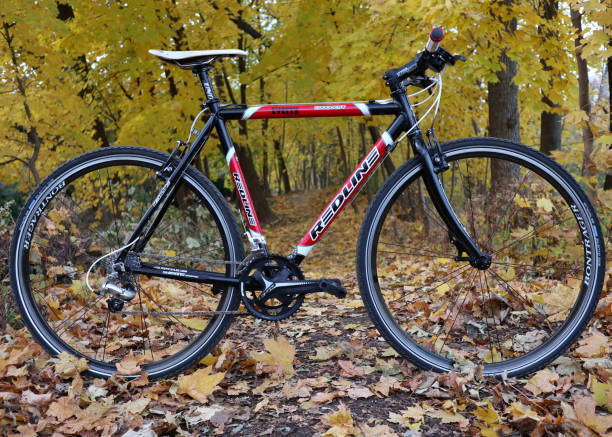
Features that Define a Cyclocross Bike
A cyclocross bike’s design lets riders tackle rough terrains with ease. Its standout features include wider tires for improved traction and disc brakes which give you more control during those heart-stopping downhill races.
The comfortable riding position is another plus. With drop handlebars similar to road bikes but slightly higher up, it allows an upright posture reducing strain on your back during long rides.
Understanding Bicycle Geometry
CX Races: A Test of Endurance and Skill
In the world of CX (cyclo-cross) races, not only does your physical stamina matter but so do skills like quick dismounts and carrying your bike over obstacles. This makes cyclocross one helluva thrilling sport. Cycling Weekly’s Guide to CX Racing.
Picking Your First Cyclocross Bike
If you’re new to the cross biking scene and thinking about getting yourself a shiny new cyclocross machine, then here’s what you need to consider: frame material – aluminum frames are common and cost-effective, but carbon frames are lighter if you’re willing to spend a bit more. Another consideration is the gearing – some riders prefer single gear bikes for their simplicity while others like having multiple gears at their disposal. Cycling Weekly’s Guide on Cyclocross Bikes.
Finally, let’s not forget about tire selection. In CX races where conditions can be muddy or snowy, wide tires with aggressive treads can give you that much-needed grip.
Cyclocross vs Gravel: A Common Question
distance adventures. Cyclocross bikes, made for racing on a mix of terrains, have different design elements than gravel bikes. Gravel bikes are built with versatility in mind and are perfect for long-distance off-road journeys.
6 – Folding Bicycles
Folding bicycles are a marvel of modern engineering, with their unique design allowing for easy transport and storage. These bikes break down into a compact size that you can carry onto public transportation or store in tight spaces at home.

Their portability doesn’t compromise performance, though. Many folding bikes match standard models in terms of speed and durability. Folding bikes stand out for their ability to fit into your life, instead of expecting you to adjust to them.
Advantages of Folding Bicycles
Foldable bicycles offer several benefits that make them an appealing choice for many cyclists. First off, their small footprint allows for effortless transport – no more bike racks needed. This also means you can take your bicycle indoors, reducing the risk of theft.
A second advantage lies in their flexibility: these two-wheelers let urban commuters cycle part way, then hop on a bus or train without missing a beat. You’ll find this feature invaluable if unpredictable weather is common where you live.
Ideal Use-Cases for Folding Bicycles
So who should consider getting one? Commuters are obvious candidates due to the ease with which folding bikes integrate into multi-modal journeys (that’s “bike plus bus/train” talk). They’re also great if you’ve got limited storage space at home or work – just fold ’em up and tuck ’em away.
In addition, those who enjoy leisurely rides will appreciate having a bicycle they can easily toss into the car trunk when adventure calls – say goodbye to cumbersome bike racks. So if convenience, flexibility, and practicality are high on your list, a folding bicycle might be just the ticket.
7 – Cruiser Bicycles
With a design that emphasizes comfort and style, cruiser bicycles have become a favorite among casual riders. They offer an upright seating posture which reduces stress on the rider’s back. But what sets them apart from other bicycle types?
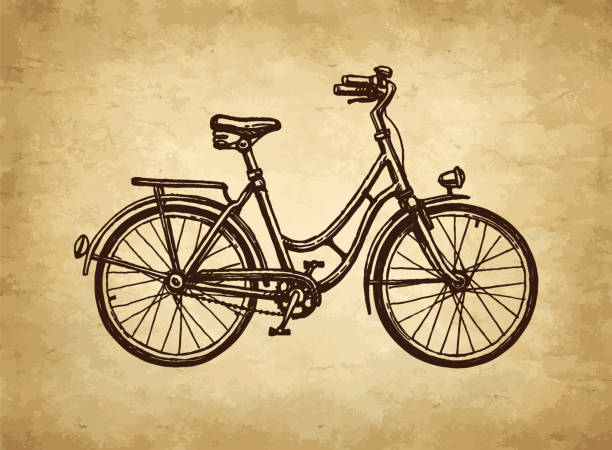
The Charm of Simplicity
Cruisers are often singled out for their simplicity. These bikes typically feature single-speed drivetrains, making them perfect for flat terrains or short-distance rides around town.
Aesthetic Appeal
Beyond functionality, cruisers score high on aesthetics too. With their vintage-inspired designs and wide variety of colors, they add more than just mobility – they bring in charm.
Comfort Above All
No discussion about cruisers can be complete without mentioning comfort. The broad saddles provide ample support while the handlebars are positioned to allow easy steering with your arms extended forward – a natural position that helps avoid strain.
Remember these characteristics next time you’re considering buying a new bike. If laid-back rides and classic styles sound appealing to you, then cruising might just be your speed.
8 – Tandem Bicycles
Tandem bicycles, often seen as a symbol of teamwork and cooperation, offer a unique cycling experience. These two-seater marvels are perfect for those who want to share the joy of cycling with someone else.

Two Riders, One Bicycle
A tandem bicycle lets two people ride together on one bike. The person in front is called the “captain,” while the back rider is known as the “stoker.” But don’t be fooled by these playful names – riding a tandem requires communication and synchronization.
Pedaling Together: A Test of Teamwork
Riding a tandem bike isn’t just about sharing pedals; it’s about learning how to work together. It’s like doing an impromptu dance where both riders need to sync their pedaling rhythm for smooth cruising.
Capturing Scenic Views Twice As Nice
If you love soaking up beautiful landscapes while biking but hate when your companion misses out because they’re focused on steering or dodging obstacles – problem solved. On a tandem bicycle, both cyclists can enjoy panoramic views without sacrificing safety or control.
Remember that although there may be some challenges initially, once mastered, tandem bicycling provides an enjoyable shared adventure unlike any other form of cycling.
Note: Keep in mind that it might take time to get used to coordinating movements and maintaining balance when starting off with this type of bike.
9 – Recumbent Bicycles
If you’re seeking the epitome of comfort in cycling, look no further than recumbent bicycles. Their design allows riders to recline while pedaling, offering a relaxing experience that traditional upright bikes can’t match.
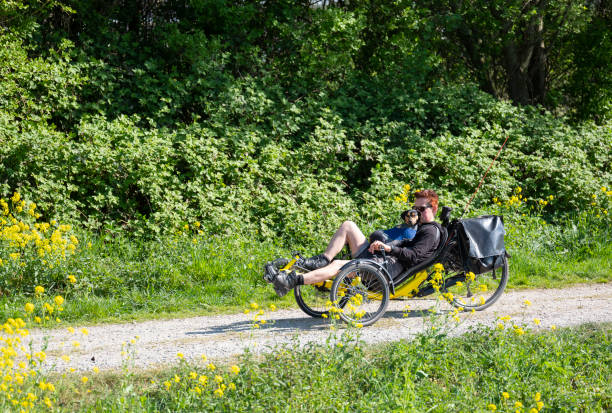
A Design Rooted in Comfort
The heart and soul of a recumbent bicycle is its laid-back design. The lower center of gravity gives more stability, while the chair-like seat supports your back and distributes weight evenly across a larger surface area. So instead of balancing your body weight on two tiny sit bones, you get full ergonomic support.
This isn’t just about luxury though – it’s also practical for those with physical limitations or who want longer rides without discomfort. A fun fact: due to their aerodynamic profile and efficiency, they often hold speed records.
Beyond Just Being Comfy…
It’s not all lounging around. Recumbents offer unique advantages beyond comfort. For one thing, they provide an exceptional workout targeting different muscle groups compared to standard bikes; this includes abs which are crucial for balance during rides.
In addition, these beasts shine when it comes to climbing hills thanks to their efficient power transfer mechanism from pedals directly into rear wheels – all whilst maintaining perfect posture. This may seem counterintuitive given their low-profile nature but trust me; recumbents know how to climb.
10 – BMX Bicycles
If you’re all about adrenaline, BMX bikes are your best bet. These bicycles are built for excitement and offer a unique ride that regular road or mountain bikes just can’t match.
Designed with small frames and wheels, BMX (Bicycle Motocross) bikes give you the ability to perform tricks while offering surprising durability. They have tough tires that can handle everything from dirt tracks to concrete skate parks.
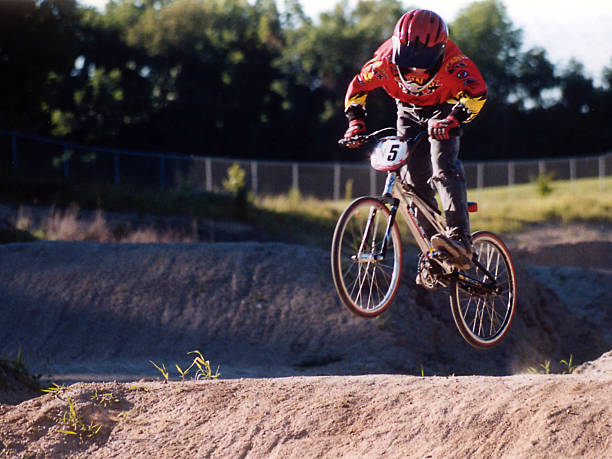
A Bold Move Towards Fun and Fitness
Beyond their cool factor, BMX bikes also pack some serious health benefits. Engaging in BMX riding helps improve balance, agility, endurance, strength—the list goes on. But don’t let this fool you into thinking it’s all work; every trick landed is an exhilarating rush.
The Right Bike for Every Trickster Out There
You might think all BMXs look alike but there’s more than meets the eye. From freestyle to racing types, each one offers different perks depending on your style of thrill-seeking.
Dirt jumpers love the robust construction of Freestyle BMXs which allow them to withstand hard landings whereas racers prefer lighter models designed specifically for speed like Racing BMX’s. Find out what type suits you best here.
11 – Fat Bikes
Have you ever thought about how a tank can move smoothly over uneven terrains? Fat bikes are the cycling equivalent of that. Fat bikes offer an advantage to those who like to take their cycling off-road, unlike regular bicycles.
Fat bikes, as the name suggests, have thicker tires compared to your average bike. This isn’t just for looks though. These wide tires let you ride on surfaces where normal bicycle wheels would sink – think sand and snow.

The Off-Road King
Riding a fat bike is like having an all-access pass to places other bikes can’t go. The wider tire footprint provides more grip, which makes it easier to tackle slippery or loose terrain.
But beneath the surface lies an even greater advantage. These robust machines give excellent control in challenging conditions due to lower air pressure in their tires. It means less jolting and bouncing around when you hit rough patches – perfect if bone-shaking rides aren’t really your thing.
Suitable Riders?
If you’re into exploring nature beyond paved roads and enjoy unique challenges, then fat biking might be up your alley. But remember: while these beasts conquer difficult terrains with ease, they need extra effort from riders because of their weight compared to standard bicycles.
No matter whether it’s summer beach riding or winter trail shredding, fat bikes offer year-round fun. Just make sure you’re ready for the workout.
12 – Cargo Bikes
When it comes to moving heavy loads with ease, cargo bikes come out on top. These bicycles are the beast of burdens in the cycling world. Designed with a high-capacity frame and extra storage space, they’re built to carry more than just a rider.
Their unique design is their superpower. Cargo bikes usually have a longer wheelbase for stability when carrying hefty items or even additional passengers. But that’s not all. They also feature reinforced frames and brakes to handle the added weight while ensuring your ride remains smooth and safe.
A Perfect Fit for Various Scenarios
Cargo bikes aren’t just designed for commercial use; they can be an ideal choice for families too. Whether you need to do school runs or grocery shopping, these powerhouses let you leave your car at home without compromising on convenience. Here’s how one mom transformed her daily routine using a cargo bike.
In cities where traffic congestion is rampant, cargo bikes provide an efficient alternative mode of transport as this article from European Cyclists’ Federation reveals. They help reduce carbon emissions making them eco-friendly alternatives as well.
Riding A Cargo Bike: My Experience
I remember my first experience riding a cargo bike – I was both excited and apprehensive about maneuvering such an imposing cycle. Yet within minutes of setting off, I found myself cruising comfortably through city streets, laden with a week’s worth of groceries.
With cargo bikes, every ride feels like an adventure. Try out a cargo bike if you’re looking for more space on your two-wheeler or aiming to lessen your environmental impact.
13 – Electric Bicycles
You might have heard about electric bicycles, or e-bikes. But what makes them unique? These high-tech bikes give a new spin to your traditional cycling experience by integrating an electric motor that offers power-assistance when pedaling.
This power-assist feature lets you conquer steep hills and long distances without breaking a sweat. If you’ve ever been put off cycling because of hilly or difficult terrain, these e-bikes could be the answer.
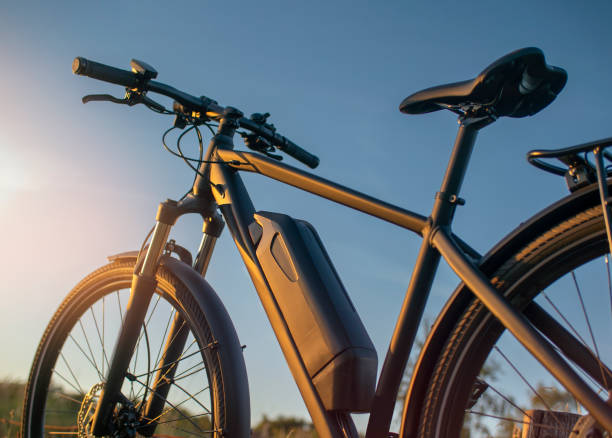
The Benefits of Electric Bicycles
E-bikes aren’t just about making your ride easier; they also pack some serious health benefits. Sure, they may offer less workout intensity than regular bikes but remember, it’s better to cycle more with lower intensity than not at all.
Besides promoting physical activity in people who would otherwise find cycling too strenuous, these beasts help reduce air pollution since they’re powered by clean energy sources. It’s like hitting two birds with one stone – staying fit while caring for Mother Earth.
Ideal Users for E-Bikes
E-bikes can benefit pretty much anyone but are especially useful for those living in hilly areas or need to travel longer distances regularly.
If fitness is on your agenda but time isn’t generous enough to let you hit the gym every day – an e-bike commute can serve as a convenient solution. They’re perfect even if age or certain physical conditions restrict rigorous workouts; thanks to their adjustable assistance levels allowing everyone on board (pun intended).
In essence, e-bikes are for those who want to get more out of their cycling experience – whether it’s speed, distance, or just plain fun.
14 – Kids Bicycles
When it comes to kids’ bicycles, they’re more than just a toy. They offer an engaging way for children to stay active and explore their surroundings. But not all kids’ bikes are created equal.
Different designs cater to various age groups and skill levels. From balance bikes designed for toddlers taking their first steps towards independent riding, Strider Bikes, known as the perfect start for your toddler’s cycling journey, is a fantastic example.
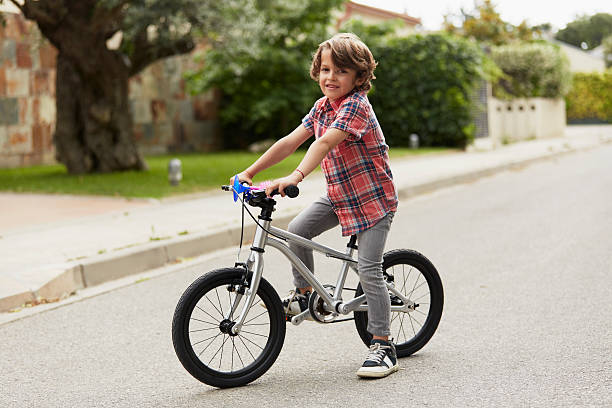
The Safety Aspect of Kids’ Bicycles
Safety is paramount when selecting a bicycle for your child. You’ll need to make sure that the bike fits them well; it shouldn’t be too big or small because proper sizing ensures better control and comfort while riding.
Brakes are another crucial feature you should look at. Coaster brakes (brakes activated by pedaling backward) can be easier for young riders who might struggle with hand brakes initially.
Picking The Right Bike For Your Child’s Age And Skill Level
To pick the right bike, consider your child’s age, size, and ability level. REI’s guide on choosing kid’s bikes provides excellent tips on how these factors influence which type of bike would suit best.
- Toddlers: Balance bikes help improve motor skills without worrying about pedals or speed.
- Ages 4-7: Single-speed bicycles provide simplicity while learning coordination.
- Ages 8-12: Multi-speed bikes let more experienced riders tackle different terrains and distances.
Remember, the best bike for your child is one they love to ride. So, involve them in the process.
15 – Racing Bicycles
A racing bicycle, often referred to as a road bike, is built for speed. It’s like the sports car of bicycles – sleek, fast, and precision-engineered.
The design of these bikes revolves around aerodynamics. The frames are lightweight but strong thanks to materials such as carbon fiber or aluminum. But it’s not just about weight; even the geometry matters in a race.
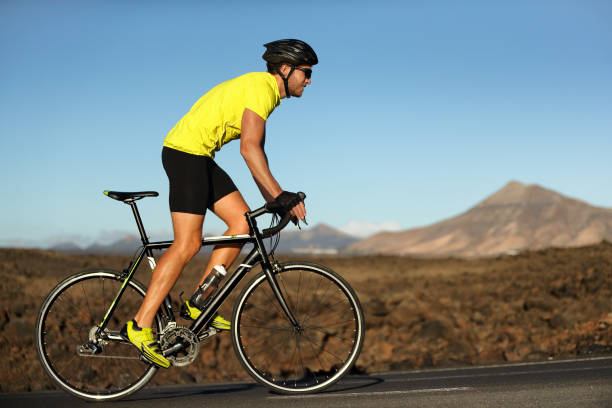
Anatomy of Racing Bicycles
The hallmark features of racing bicycles include thin tires called slicks, which reduce rolling resistance on paved surfaces.
They also have drop handlebars that let riders adopt various positions to combat wind resistance effectively.
Who Are They For?
Racing bicycles cater mainly to competitive cyclists who need high performance from their ride. However, they’re also great for fitness enthusiasts looking for intense cardio workouts or people with long commutes wanting speed over comfort.
Caveats Of Using A Racing Bicycle
Proper setup is crucial when using a racing bicycle due its unique shape.
Remember though: While they offer superior speeds on smooth pavement, their light build and narrow tires make them less suited for off-road conditions.
If you have a need for speed more than versatility — get yourself a racing bicycle.
Conclusion
Who knew the world of types of bicycles was so diverse? We’ve explored everything from road bikes designed for speed and efficiency to mountain bikes that thrive off-road.
We delved into hybrid bikes, combining the best features from both worlds, making them ideal for city commutes or light trail rides.
We admired touring bikes with their sturdy frames and comfortable riding positions, built to endure long-distance travel while carrying heavy loads. :pray:
You should now be armed with a solid understanding of what makes each bike type unique. But remember, choosing your perfect ride isn’t just about specs – it’s about finding the bicycle that suits your lifestyle and spirit.
In short: explore freely! Each journey starts with a single pedal stroke!

